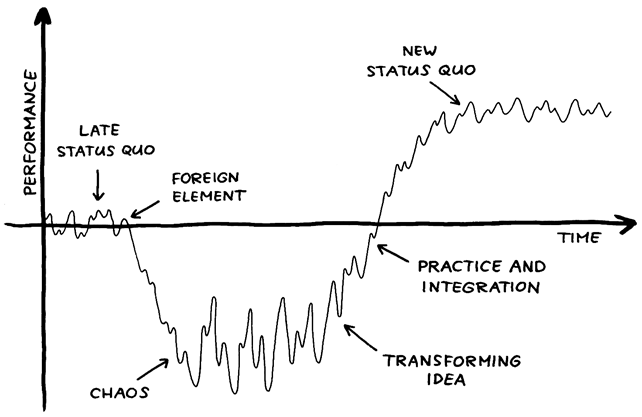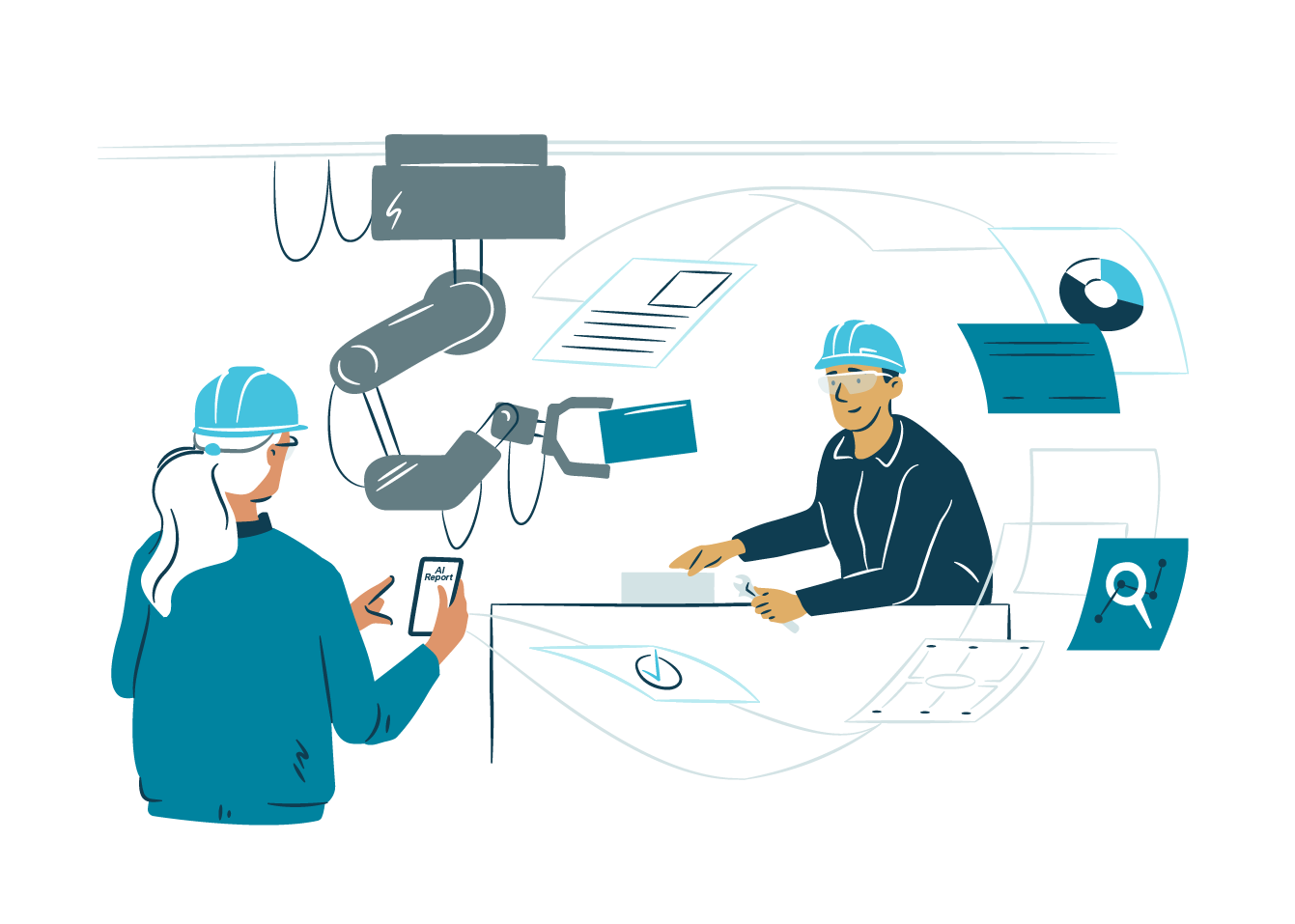In this blog series I’ll tell what is high performance team, what is benefit for people and business of them, what is the most important factor of high performing team and how to build them with detailed instructions.
In Part 3 you find instructions how to increase team performance even more with defining performance standards and how to achieve full team commitment to common goal and results.
After you have deal with Absence Of Trust (as instructed in Part 2) you will find it easier to increase team performance even further with these methods.
Fear of Conflict, Level 2
When there is no trust inside the team, constructive and ideological conflicts are being avoid. Instead artificial harmony is preserved. Constructive conflict means conflict with results. Good conflict doesn’t include politics, insults or personal attacks. What are included in constructive is passionate and impassioned debate about ideas. Good conflict doesn’t mean you have to won debate, it means listening to other people opinions and considering their point of views.
Good teams don’t avoid conflicts. They know that difficult and hard things must be handled and then move on. They admit their mistakes, weakness and worries without fear of revenge.
When people doesn’t share their feelings and don’t feel like they are being heard they also don’t want to participate in making decisions.
Politics means that people chose their words according to what listeners wan’t to hear or react, instead saying what they really think about the matter. – Lencioni
Fear of Conflict causes:
- Artificial harmony
- Boring meetings
- Politics
- Avoiding of difficult topics
- Team members don’t participate in decision making
When conflict are not avoided:
- Meetings become interesting
- Every team member will share their opinions
- Real problems are solved quickly
- Politics are minimized
- Critical topics are discussed first
How to overcome fear of conflict?
First, team must have reached mutual trust (psychological safety, Level 1). Second, you must tell people that conflicts are for good! People must be aware of benefits of constructive conflicts so they can be effective. Sometimes you can even pursuit people to bring up difficult matters for discussion (feed the conflict). It is beneficial to learn to identify artificial harmony.
How to build constructive conflict:
- When you are annoyed by a team mate and hoping that he wouldn’t do something again. Change complain to require (from negative to positive) and tell him what you’d like him to do next time in similar situation instead of complaining about something. Change might seem minor but there is huge different in tone of voice. This lessens frustration and helps to build constructive conflict.
- Real time reminder of need of conflict:
- When team is debating about something in constructive way some people use to withdraw from conflict when tone of discussion exceeds the limits of comfort zone. This is the time when you must remind people that conflicts are for good and encourage them to continue.
Lack Of Commitment, Level 3
Need of consensus and security prevents decision making and commitment which leads to ambiguity about what has been decided and which actions team needs to start doing. Effective teams make sure that everyone’s opinion has been heard and considered. This creates acceptance for any decision that team decides to make.
”Disagree and commit” team can debate about things and disagree but still it is possible for everyone to fully commit to decision. It is better to listen everyone’s opinion and commit to decision even there are no certainty about result than change decision back and forth. When everyone’s opinion are heard there will be no politics. If people feel that they are not heard and if decision turn out to be wrong it will raise ”I told you so” comments.
Lack of commitment causes:
- Ambiguity about team direction and priorities
- False feeling about progress and commitment
- More uncertainty and fear of failure
- Possibilities are narrowed down due to too much analyzing
When teams are committed:
- Team direction and priorities are clear
- Whole team has common goal
- Team develops ability to learn from mistakes
- Go forward without hesitation
- Are able to change direction without hesitation
How to reach commitment?
- Setting deadlines for making decision and respecting it makes sure that teams stays in topic and disagreements are handled before they grow too big. When team ”forces” itself to make decision after short discussion and analysis they usually understand that quality of decision was better what they expected and that decision would’t have been very much different if more time would have been spent on it.
- Think about the worst possible scenario (Worst Case Scenario)
- By figuring out the worst possible scenario and effect of decision helps to understand that the price of wrong decision is bearable and decision is better that no decision.
- Commitment Clarification
- 5 minutes before the end of meeting facilitator should ask question ”What exactly have we decided today?” By being accurate about what has been decided team is able to identify discrepancies before decision is made.
- Commitment to the main principles
- Team must commit to meeting schedules, open communication and accepted behavior. Teams must commit also to other company wide principles such as meaning, purpose, mission, strategy and goal.
Avoidance Of Accountability, Level 4
Fear of stepping out of personal comfort zone prevents team members to require accountability from other team members. Requiring accountability from others demands that team can commit (Level 3) to common goals or accountability cannot be required. When clear goals can be defined accountability can be also required. Team members must be able to bring out behavior or performance which can hinder team. In fact avoidance of requiring of accountability because of fear of stepping out of comfort zone leads to performance declining and that leads to grudge between team members.
Avoidance of Accountability causes:
- Creates grudge between team members because of different performance standards
- Encourage mediocrity
- Team misses deadlines and doesn’t finish what is promised
- Leader of the team is usually seen only one responsible of high discipline
When team takes responsibility:
- Members with low performance feels natural pressure to improve performance
- Potential issues are quickly identified questioning solutions made by others without hesitation
- Removes heavy performance tracking
How to create culture of accountability?
Enemy of accountability is ambiguity. Before you can set expectations clear goals and standards must be known. Setting team goals and some rewards might also help. Team members bring out potential issues more easily when goal is common for whole team.
Team Effectiveness (1 & 2)
Purpose of team effectiveness exercises are to improve accountability by bringing up expectations of other team members and also made a promise about your own performance standards.
1 (Easy, Low or moderate psychological safety. Suitable for new teams)
Instructions on Miro
2 (Advanced, requires high psychological safety. For teams that has been working together for a longer time > 1 year)
Purpose of this exercise is to make possible for team members to give accurate, direct and functional feedback to each other about how individual behavior can affect to team performance.
Short instructions:
- Every team member answers to following questions about all other team members:
- What is that person’s single most important behavioral quality that contributes to the strength
- of the team? (That is, their strength.)
- What is that person’s single most important behavioral quality that detracts from the strength of the team? (That is, their weakness or problematic behavior.)
https://www.tablegroup.com/imo/media/doc/Team_Effectiveness_Exercise.pdf
(Note: Any virtual white board tool is suitable for this. Example Google Jamboard. Create own page for every participant.)
When team performance standards are created there is usually decline in performance. But it happens only because it takes time to get familiar with new way of working and eventually team performance will reach higher level than originally.
Inattention to Results, Level 5
Pursuit of personal goals and status crumbles focus on teams collective success. Without accountability people starts to reach for personal goals at the cost of team goals. In sport terms player is satisfied in three personal goals even if team loses the game. For many teams setting clear goals is very challenging.
Goals which team must reach must be made so clear that no one doesn’t even consider doing something just to improve personal status or ego. Because it would inevitably prevent team from reaching it goals. And then everyone would lose. – Lencioni
Team which doesn’t focus on results:
- Don’t grow
- Seldom beats competitors
- Loses goal-oriented members
- Encourages to reach for personal goals
- Is easily disturbed
Team which does focus on results:
- Goal-oriented people stays on team
- Individualistic behavior is minimized
- Wins or loses as a team
- Benefits from individuals who set aside personal goals in favor of team common goals
- Avoids distraction
How to get teams to focus on results?
- Make profit target (or any other goal) public
- Teams who make their goal public will more likely to work for reaching the goal
- Recognition and rewarding based on result
- Bonuses can be tied to results. Although result must not be the only factor of bonus. Economical factors are usually not good way to be the only behavior affecting motivator. Anyway if bonus (full) are given for good work without the expected results, which team was committed, might give wrong feeling about the importance of results.
Most teams gets huge improvement in their performance after they have deal with Absence Of Trust. But once the foundation and momentum of improving team performance is created it is important to use it with methods.
What’s next? High Performance Teams is one step of finding Flow state. In order to reach Flow state and self-steering psychological basic needs (team or individual) must be reached. Psychological basic needs are relatedness, mastery, purpose and autonomy.
Check Gofore’s blog frequently as I will be writing more blogs about how to reach flow state with strenghtening psychological basic needs. Which psychological basic need is the most important from your point of view in order to reach flow state and how have you reached it within a team or individual level?
Sami Kutvonen
Technical Project Manager (Scrum Master, Agile Coach)
Sources:
Five Dysfunctions of a Team, Patrick Lencioni
https://rework.withgoogle.com/blog/five-keys-to-a-successful-google-team/
https://rework.withgoogle.com/blog/creating-a-high-trust-performance-culture/
https://management30.com/practice/personal-maps/
https://www.linkedin.com/pulse/deep-dive-five-dysfunctions-team-summary-notes-tons-more-omar-usman
https://blogs.hope.edu/center-for-faithful-leadership/uncategorized/five-dysfunctions-of-a-team/
https://medium.com/@johnpcutler/of-course-psychological-safety-but-how-21adb8d97ba7
http://abinoda.com/book/five-dysfunctions-of-a-team
https://www.tablegroup.com/imo/media/doc/Team_Effectiveness_Exercise.pdf
https://www.goodreads.com/work/quotes/22516-the-five-dysfunctions-of-a-team




